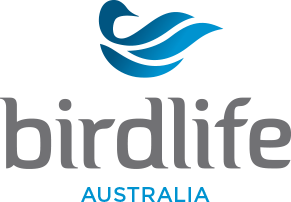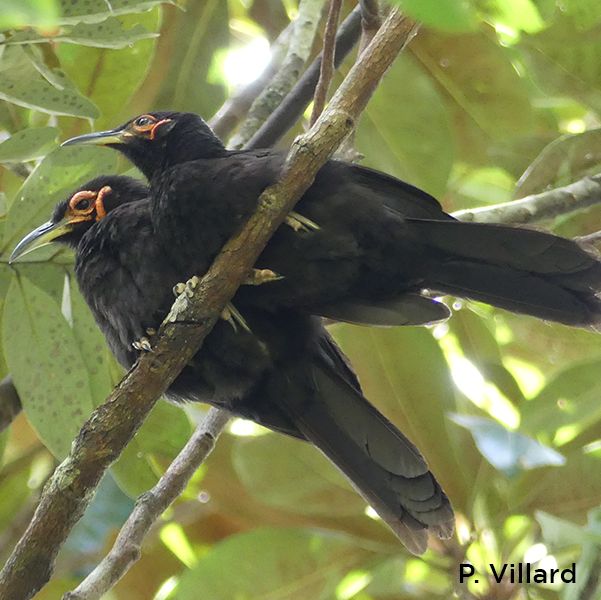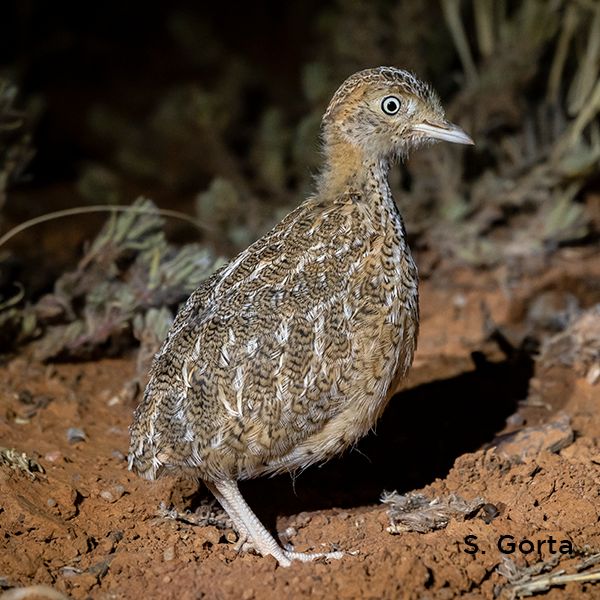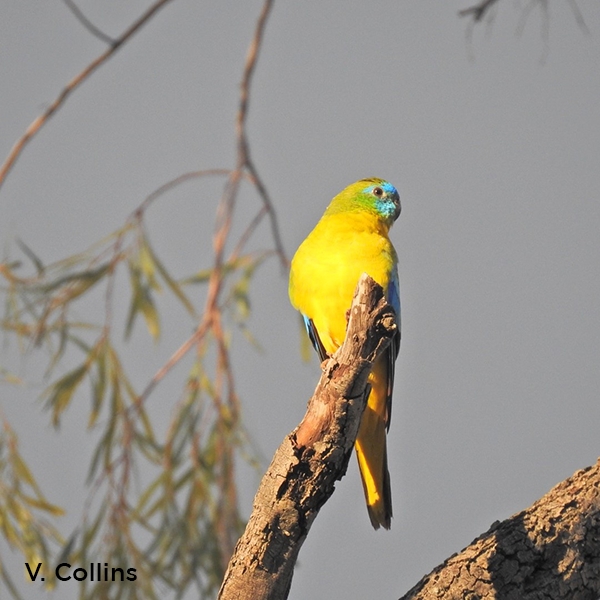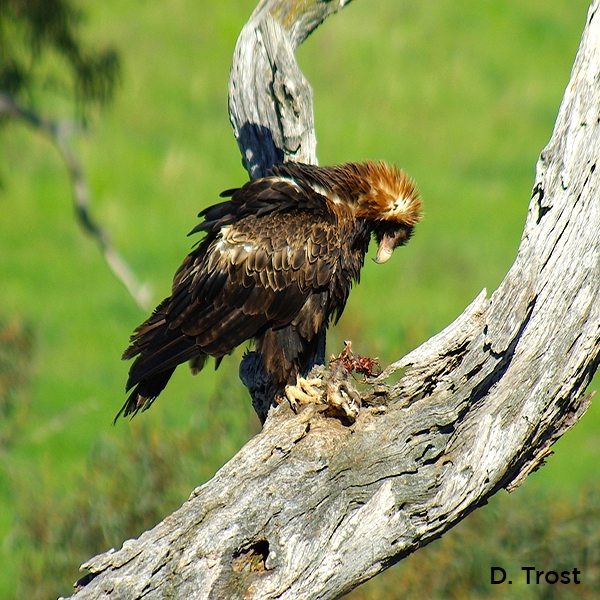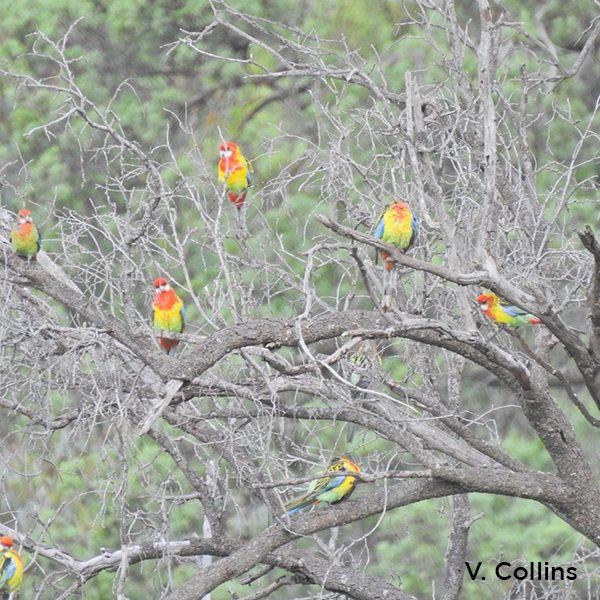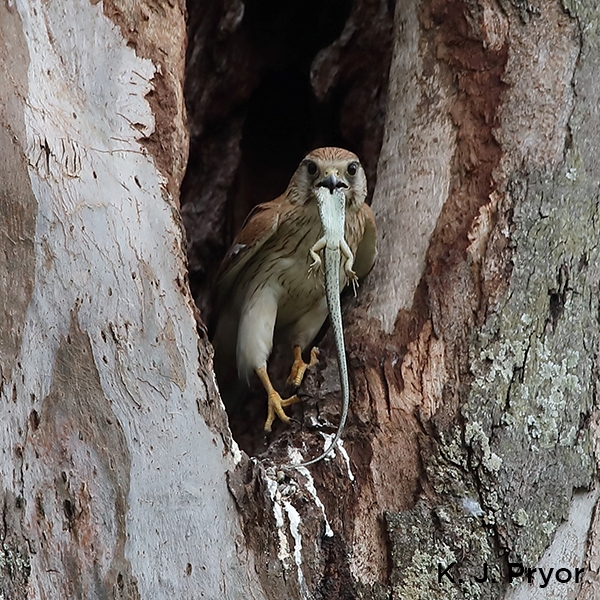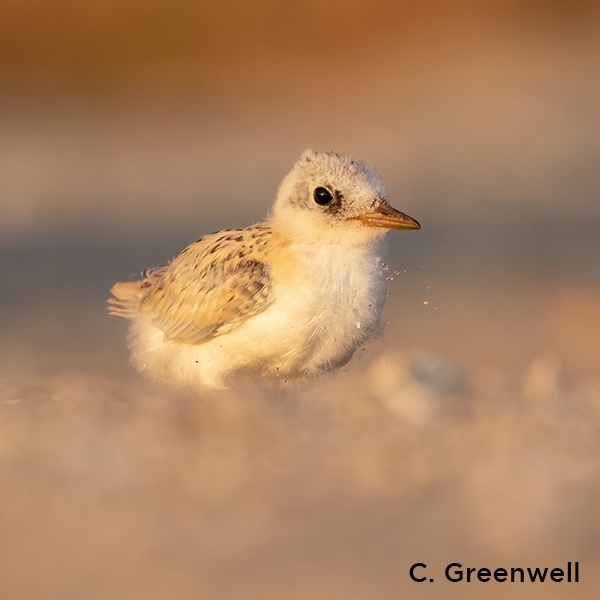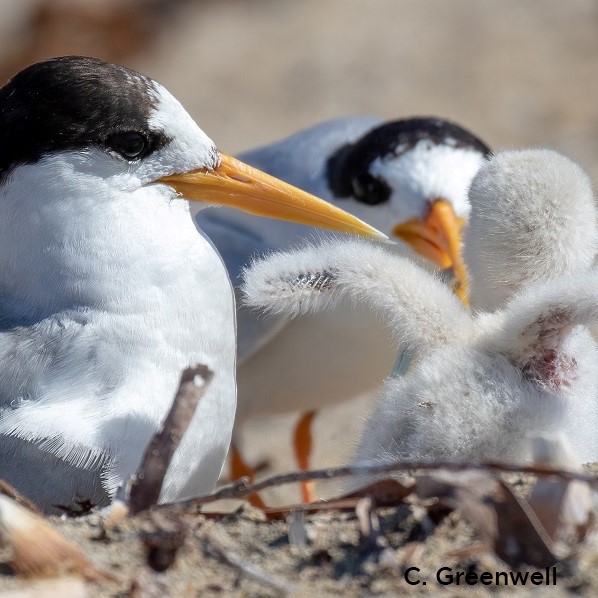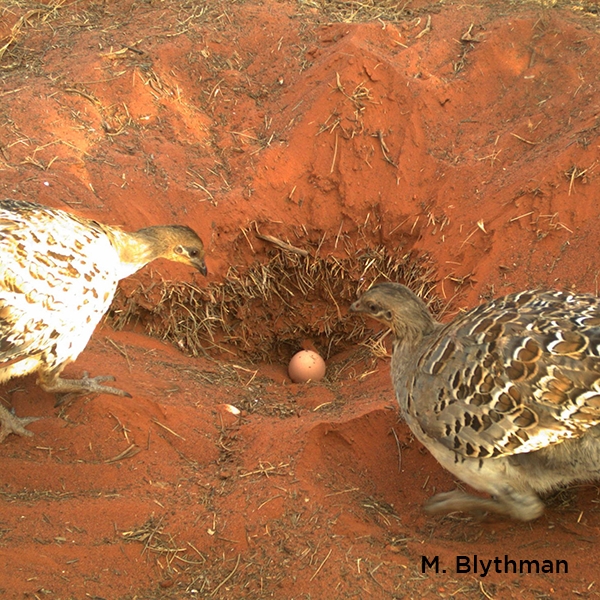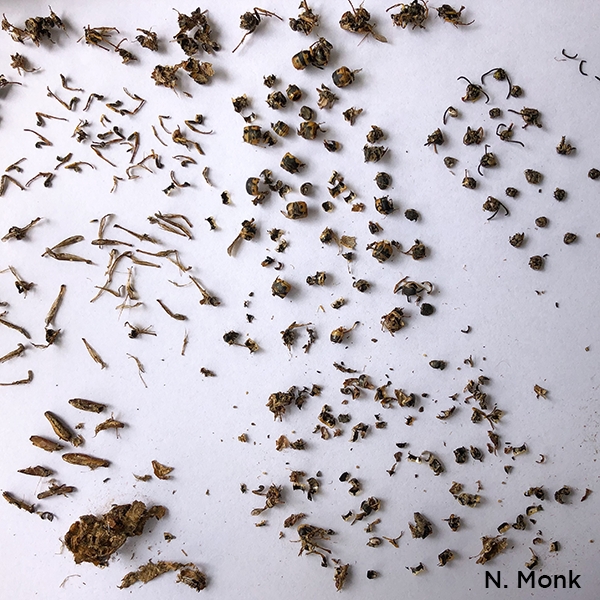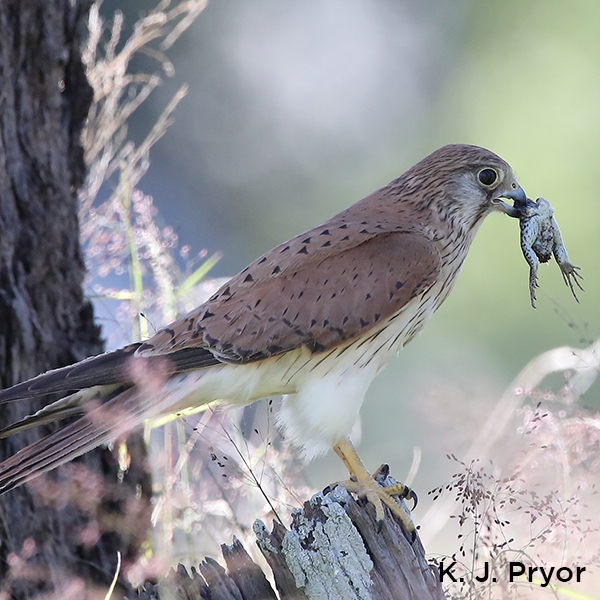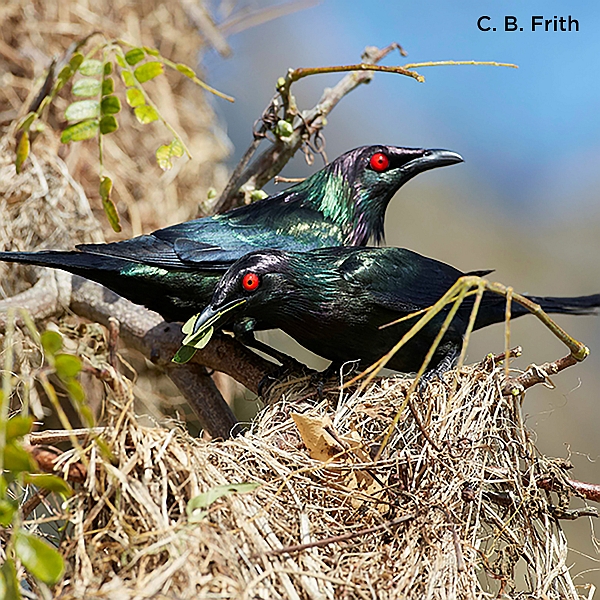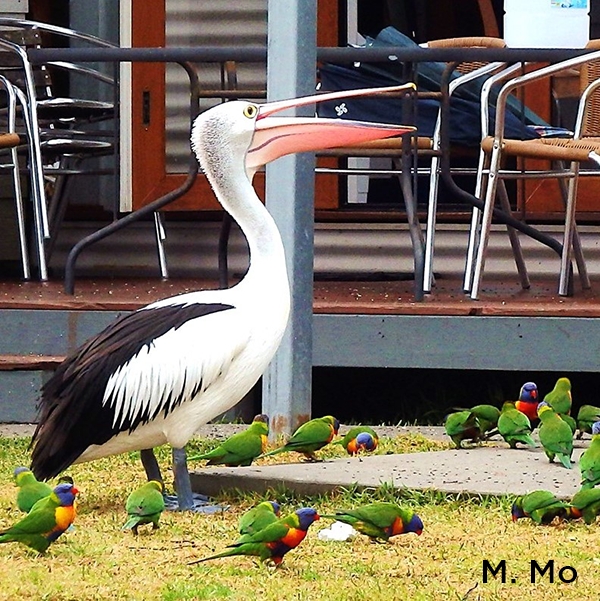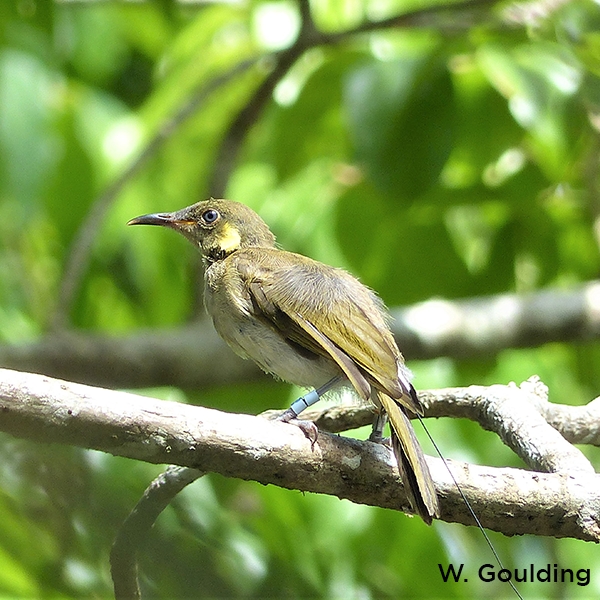Breeding biology of the Yellow Wattlebird Anthochaera paradoxa and its reproductive traits compared with three other species of Australian wattlebirds
Richard H. Donaghey, Donna J. Belder
Abstract
We studied the breeding biology of the Yellow Wattlebird Anthochaera paradoxa at Myalla, north-western Tasmania, in October–December 2023. One nest with a clutch and brood size of three was watched during the incubation stage for 12 hours, and for 21.2 hours during the nestling period. Female daylight incubation constancy was 76%, the mean duration of
incubation on-bouts was 15.4 minutes and off-bouts 5.1 minutes. The daily number of incubation bouts was 35, and the mean number of female nest visits was 3 per hour. Incubation feeding of the female at the nest by the male was not observed. Both female and male fed the young and removed faecal sacs. Mean brooding constancy by the female was 47.6% for Days 1–4 of the nestling period. Mean number of food-delivery trips by male and female combined for Days 1–20 of the nestling period was 18.5 per hour, and 6.2 per nestling per hour. Young fledged in all four nests. The high nest success coupled with high nest-visitation rates during the nestling stage suggests that the risk of nest predation is low in the Yellow Wattlebird at Myalla. The reproductive traits of the Yellow Wattlebird are compared with those of three congeners: Red Wattlebird, Little Wattlebird and Western Wattlebird.
incubation on-bouts was 15.4 minutes and off-bouts 5.1 minutes. The daily number of incubation bouts was 35, and the mean number of female nest visits was 3 per hour. Incubation feeding of the female at the nest by the male was not observed. Both female and male fed the young and removed faecal sacs. Mean brooding constancy by the female was 47.6% for Days 1–4 of the nestling period. Mean number of food-delivery trips by male and female combined for Days 1–20 of the nestling period was 18.5 per hour, and 6.2 per nestling per hour. Young fledged in all four nests. The high nest success coupled with high nest-visitation rates during the nestling stage suggests that the risk of nest predation is low in the Yellow Wattlebird at Myalla. The reproductive traits of the Yellow Wattlebird are compared with those of three congeners: Red Wattlebird, Little Wattlebird and Western Wattlebird.
